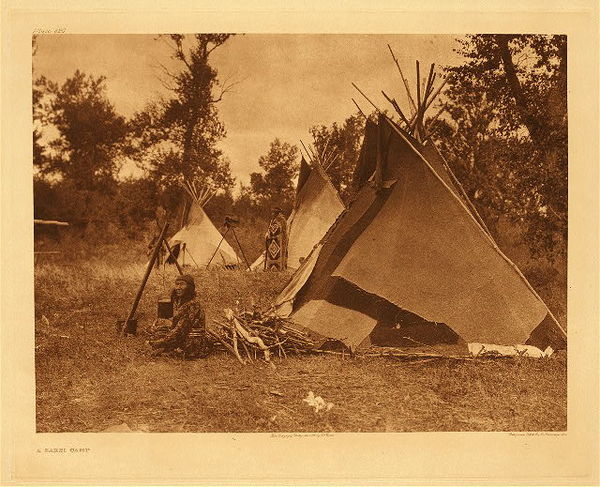Edward S. Curtis (1868-1952)
View Artist Biography
SOLD
Title:
Plate 620 A Sarsi Camp
Date:
1910
Size:
Portfolio, 18 x 22 inches
Medium:
Vintage Photogravure
This photogravure by Edward Cutis has two people, a woman by the cooking fire, and a man stands in the back with an ornate cloak.
In Volume 18 Edward Curtis writes - The Sarsi are a small Athapascan tribe that separated, before the historical period, from the Beaver Indians. The Sarsi mythological explanation this that a large body of people were migrating southward across a frozen lake, the ice was suddenly shattered by a water-monster whose horn had been frozen in it, and those who had already crossed were the ancestors of the Sarsi.
This tribe originally resided in the Saskatchewan, but migrated near and became closely associated with the Blackfeet, Bloods and Piegan and were often considered a fourth member of that confederacy and adopted many of the material and religious customs. Nevertheless, they preserved their own language.
In Volume 18 Edward Curtis writes - The Sarsi are a small Athapascan tribe that separated, before the historical period, from the Beaver Indians. The Sarsi mythological explanation this that a large body of people were migrating southward across a frozen lake, the ice was suddenly shattered by a water-monster whose horn had been frozen in it, and those who had already crossed were the ancestors of the Sarsi.
This tribe originally resided in the Saskatchewan, but migrated near and became closely associated with the Blackfeet, Bloods and Piegan and were often considered a fourth member of that confederacy and adopted many of the material and religious customs. Nevertheless, they preserved their own language.
